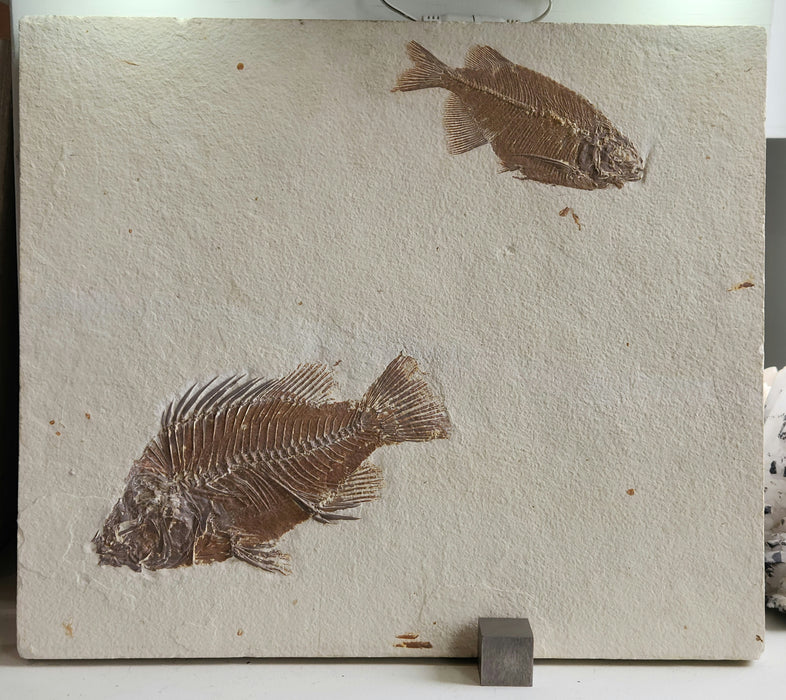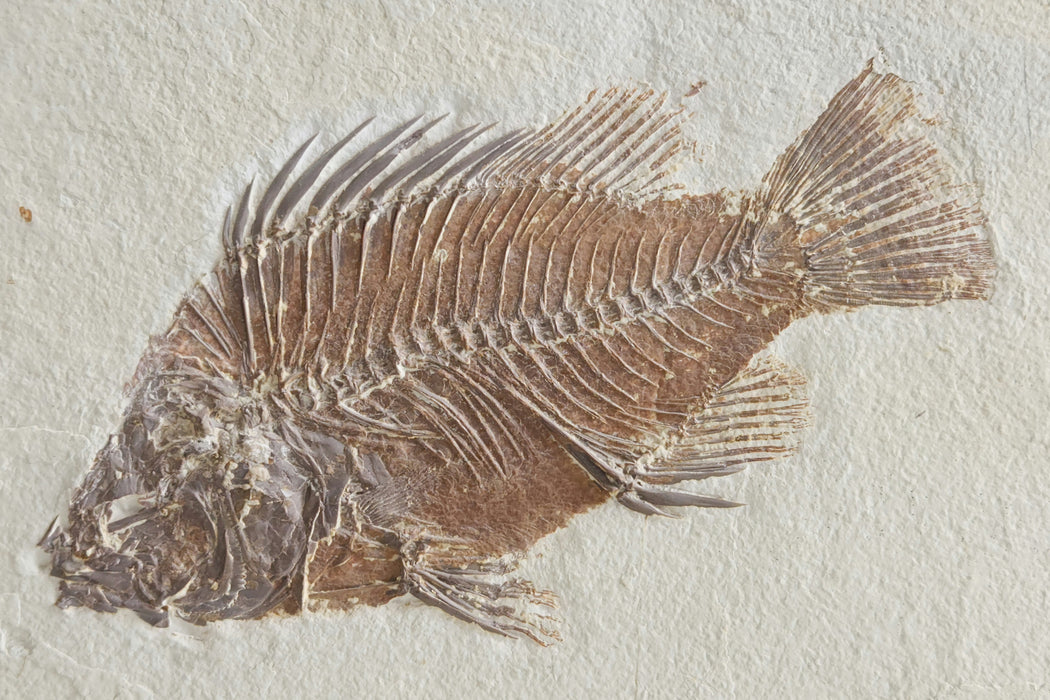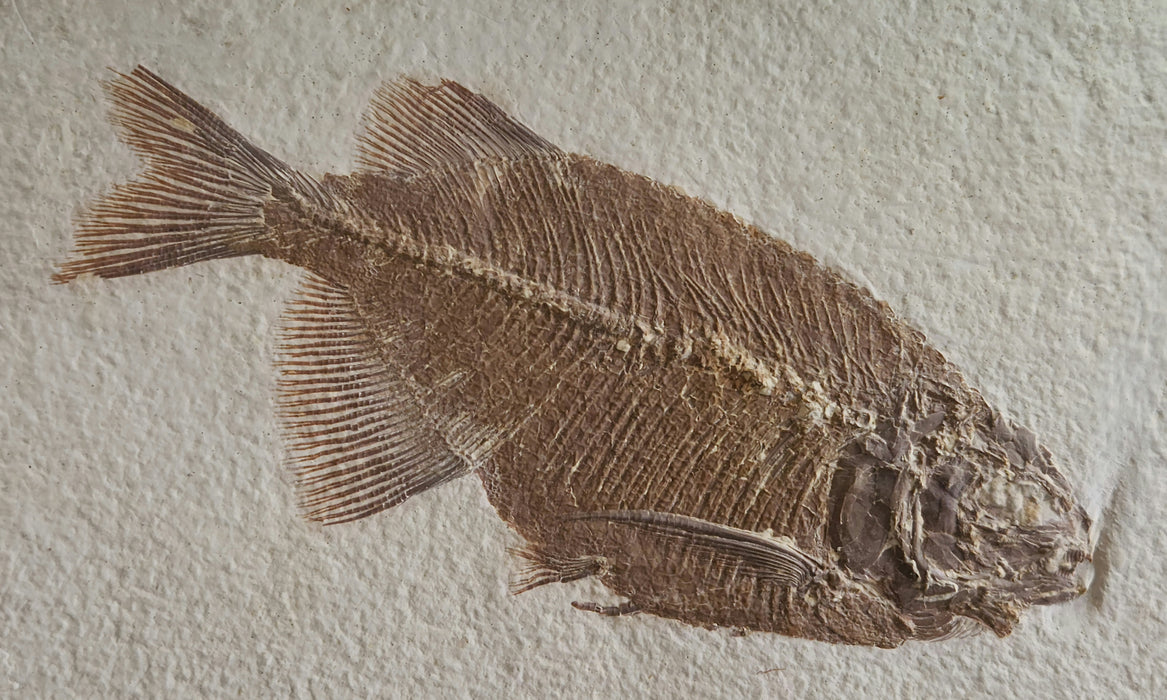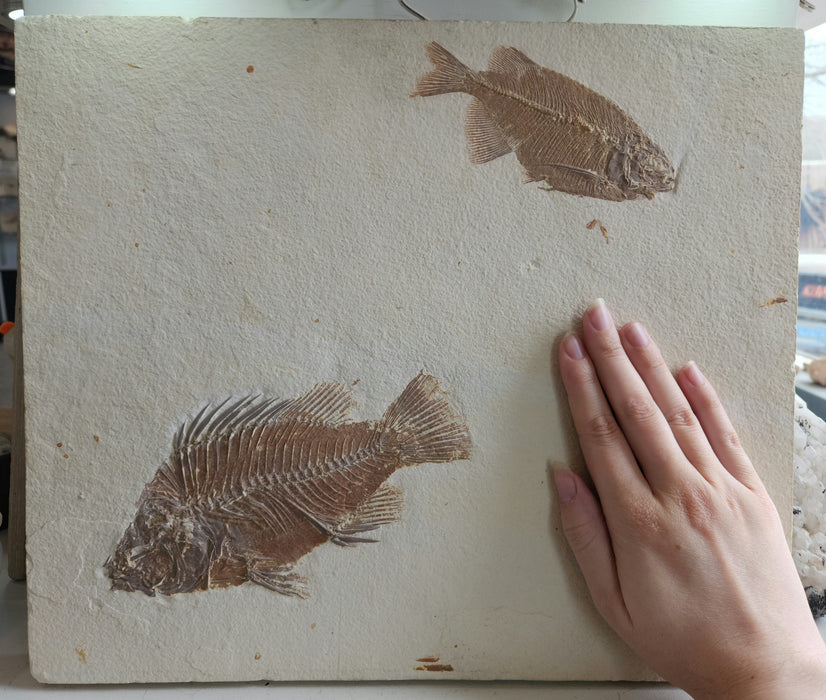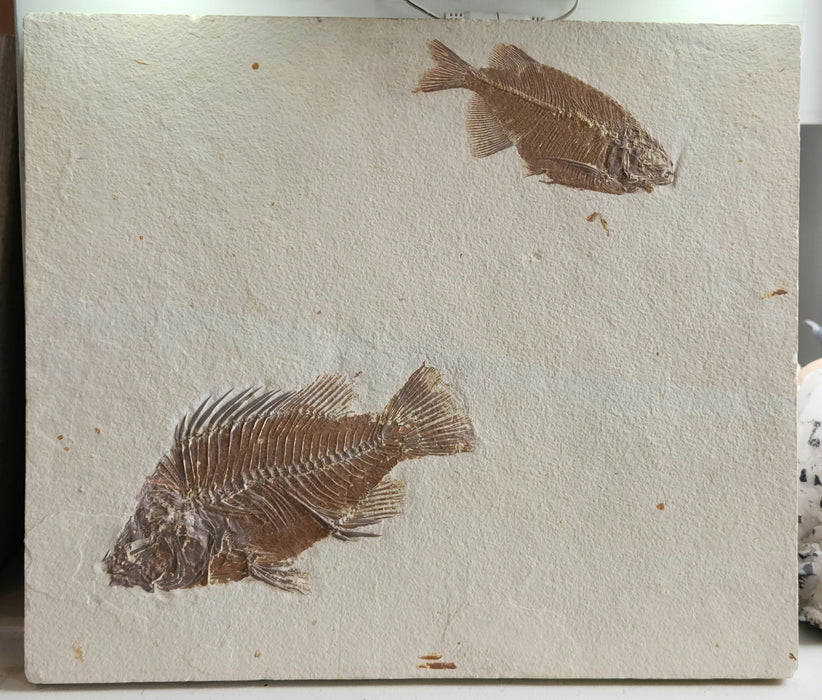
Priscacara serrata and Phareodus testis | Green River Formation | Wyoming
Plate approx. size: 15" x 12.75" x 1.25"
Priscacara approx. size: 7.5"
Phareodus approx. size: 5.5"
Order Perciformes
Family Moronidae - C. liops, P. serrata, H. hypsacantha, and undescribed Priscacara & Hypsiprisca species
P. serrata is perhaps the most popular and sought after of the Green River Formation fish fossils. The Moronidae are a family of perciform fishes, commonly called the temperate basses. P. serrata is an uncommon find compared to Cockerellites liops, which are often confused without proper examination and preparation. P. serrata are typically larger than C. liops. The best preserved fossils are extracted from the famous "18-inch Layer" on either very sunny days or at night under halogen lights. The reason for this is because a fine layer of limestone shale covers the fossils, and we need to see protruding backbones cast a shadow in order to find the fossils.
Bony-Tongue Fish - 2 Species Identified: Phareodus encaustus & Phareodus testis
Order Osteoglossiformes, Family OsteoglossidaeLiving members of the Osteoglossidae family:
- include 10 modern species
- live exclusively in tropical freshwaters
- found in South America, Africa, Asia, and Australia
- mouth-brooders (parents hold eggs and hatchlings in their mouths)
- adult specimens usually found alone, but juveniles known from mass mortalities
- indicates that Phareodus schooled as a juvenile and became solitary as an adult
- often preserved with smaller fish in their jaws and stomach, indicating they were predators
- rearward oriented fins on back and underside, adaptation for speed
- large, sharp teeth
- max known size of P. encaustus: 30 inches
- max known size of P. testis: 20 inches

